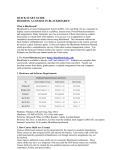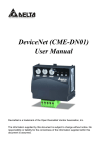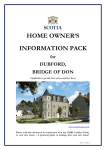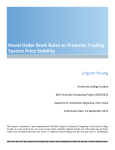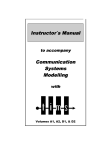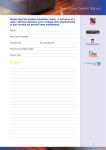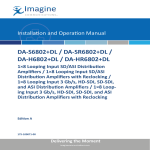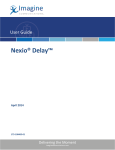Download Pegasus Software Platform 2015 Version release V1.1.1.2 F - Sec-Eng
Transcript
Pegasus Software Platform 2015 Version release V1.1.1.2 F This manual is protected by copyright 2015 and may not be Modified or adapted without the Permission of Sec-Eng systems Pty ltd This product is Proudly Australian Designed and Developed By Sec Eng Systems Telephone 02-9524-9952 Software Version Control •May •Nov •Oct •Jan •Mar •May •Nov •Jan •Feb •Mar •May •June •June •Nov •Feb •June 2010 Basic Software release 2011 Module Poll fail timers 2012 Module linking Assets 2013 Module Asset system upgrade feature 2013 Module Asset system control feature 2013 Module manage changes feature 2013 Module Geo Zone feature 2014 Module Single SiiP feature 2014 Module Contact ID module 2014 Module Poll fail CID feature 2014 Module Email engine 2014 Module Welfare check 2014 HTTP (Whisper) Engine 2014 Asset Groups Module 2015 Web Acesss limited 2015 Web Access More features Table of Contents 1-Pegasus Cloud Server Access Cloud Server client access guide Set Up 2-User Pegasus Client Screen USER GUIDE 2-1 Main Screen USER GUIDE 2-2 Side Menu map USER GUIDE 2-3 Main map info Selector USER GUIDE 2-4 Side Menu following USER GUIDE 2-5 Side Menu Active USER GUIDE 2-6 Side Menu Asset details USER GUIDE 2-7 Side Menu In Alarm USER GUIDE 2- 8 Side Menu Parked USER GUIDE 2- 9 Side Menu Offline / Disabled USER GUIDE 2- 10 Side Menu History USER GUIDE 2- 11 Side Geo zones USER GUIDE 2- 12 Welfare Check System overview USER GUIDE 2- 13 Web Access Guide Table of Contents 2-Administration & Set up ADMIN 2-1 Basics of user and Group set up ADMIN 2-2 File / Manage User / Groups ADMIN 2-3 Assigning groups to assets ADMIN 2-4 File / User History ADMIN 2-5 Enrolling a Asset ADMIN 2-6 Setup Asset details ADMIN 2-7 Setup Asset Inputs ADMIN 2-8 Setup Asset Outputs ADMIN 2-9 Setup Linked Asset ADMIN 2-10 Setup Poll fail timers ADMIN 2-11 Setup Geo Zones part A ADMIN 2-12 Setup Geo Zones part B ADMIN 2-13 Setup Global Settings Command ADMIN 2-14 Setup-Command and control ADMIN 2-15 Software upgrade of assets ADMIN 2-16 Deleting of Assets ADMIN 2-17 Disable assets for Service mode ADMIN 2-18 Welfare Check set up Table of Contents TECHNICAL TECHNICAL Set Up SiiP Overview TECHNICAL Setup SiiP Part A TECHNICAL Setup SiiP Part B TECHNICAL Installation SiiP into a control room Part C TECHNICAL Setup SiiP Part D TECHNICAL Setup SiiP Part E TECHNICAL Setup SiiP Part F TECHNICAL Setup Contact Id code on assets part A TECHNICAL Setup Contact Id code on assets part B TECHNICAL Setup Contact Id code on poll fails TECHNICAL Setup Contact Id code on Welfare Check TECHNICAL Setup Email notification Part A TECHNICAL Setup Email notification Part B TECHNICAL Setup Email notification Part C TECHNICAL Setup Email notification Part D TECHNICAL Setup Email notification Part E TECHNICAL Setup Whisper Legal Terms and conditions of use 1-Pegasus Cloud Server Access A- Cloud Server client access guide Set Up The Pegasus cloud platform is hosted by an Amazon secure server in Australia. To access this, you will need a user name and password provided by Sec-Eng. The access is provided by a Secure window remote desktop application, known as remote desk ( RDP ) This application is available on most window pc’s and I-pad applications To set up you need the following •The IP address of your provided cloud server by sec-eng •User name and password to access • Pegasus User name & password Setting up on windows PC 1/ Go to start and in the search program window ,type remote desktop a window will automatically bring up a known list Select Remote Desktop Connection and open it 53.67.98.88 2/ Select show more options button to expand 3/ Enter the following details • Ip address into computer provided by Sec-Eng • User name provided By Sec-Eng • Tick allow to save credentials • Then hit Save •Then hit connect PTO 53.67.98.88 1-Pegasus Cloud Server Access 7/ you will now be prompted to enter a Username and password Use the same that provided again Tick remember credentials, then OK 8/ A verification screen will appear Ignore Errors ,Tick don't ask again for Connections then Yes You should now be connecting to the secure cloud server The following should appear 9/ You have now logged onto the secure cloud server Open the Pegasus application If its not open Double click the Pegasus Icon in screen to open 10/ You will be prompted for a user name and password To Access the Pegasus application. This will be provided by Your Administrator •To log off Pegasus go file / log off •To log off the Sever application move your mouse to the centre top of the screen and Blue Exit bar will appear, hit X to exit A- Cloud Server client access guide Set Up USER GUIDE 2-1 Main Screen 4 1 2 3 1=Pull down menu 2=Map selection/ Long short Info/ Group selector 3=Side bar menu 4=Offline & Online indications of Main Server and Siip Comms (Note: After 5 mins of lost or no communications with the main server or SIIP will show , an on screen alarm message USER GUIDE 2-2 Side Menu map The Map Menu allows you to: •Go to a coordinate location •Go to a location by name •Reload the current map view •Change the map type •Save the map view •Zoom the map The latitude and longitude coordinates can be entered on this menu and the map moved to display the location in the centre of the map. The coordinates are in decimal degrees (ddd.dddddd) - NOT degrees and minutes. A location can be entered in words (e.g. Camperdown, NSW) and the map will be centered on that location. Major landmarks may also be entered, but it is matched to a worldwide database, so clashes may occur and the map may centre on the wrong location. The map type can be changed and reflects the type selected/shown on the top right of the map. The current map view can be saved as a PNG file. Clicking “Save View” displays a Save File dialog and allows the user to type the name and select the location, to save the file. USER GUIDE 2-3 Main map info Selector 1/ Map mode bar This allows you to select different Map mods •Google maps •Sat maps •Bing map And others Please be aware that Sat maps Use more Graphics And band width 2/ Long and shot info bar This enables selects long and shot information on you tracked asset Long name Short name 3/ Groups info bar In this mode you can select groups to view If you have full access rights you can see all groups , if you have limited group access You will have access to the groups you have been set up for , use this to select groups you have access to. USER GUIDE 2-4 Side Menu following The following menu displays a list of systems that are currently being followed. Followed units are displayed on the map and updated automatically as new position reports that are received from the systems. Within the menu the System ID is shown along with the coordinates of the system, it’s speed and course. The color at the end of the line indicates the GPS signal strength or alarm status. If it’s red, the unit is in alarm, otherwise it is green, yellow or orange. A followed unit has an information balloon shown with it giving details about the system. There are three levels of information displayed: On map Short: (default) displays the System ID. Hover Mouse over dot to show Long: displays System ID, GPS coordinates, speed, course and the time the last poll was received. Mouse Over: displays the same information as Long with the addition of the location in word form. The level can be changed between short and long using the drop down box in the top right of the map. Moving the mouse cursor over the dot of the system will show the Mouse Over level of information. The color and size of the dot representing the system on the map changes depending on the GPS signal level. There are three different combinations: Small green dot: very good GPS signal level. Medium yellow dot: an acceptable GPS signal level, large orange dot: a low GPS signal level. If the system is currently in alarm, the color of the dot is changed to red. The size of the dot will still indicate the GPS signal level. The last unit to be followed, will remain in the central part of the screen with the map being moved as required as the system moves. If the map is panned or zoomed and the system is taken out of the central part of the map, the map will no longer follow the system. Double clicking the system in the menu, will again centre, and then follow it. Double clicking on the system in the map window will display the System Details menu. Also, right clicking the unit in the Following Menu and selecting System Details will show them. To remove a system from being followed, right click the system in the Following Menu and select Remove. If no polls (position reports) are received from a system within a period of time (approximately 5 minutes) the system will be removed from being followed. USER GUIDE 2-5 Side Menu Active This Menu will show all active Assets currently on line. The Green up Arrow button will expand and contract the button window. Buttons - Display all active Assets When selected, this will widen your display and show on screen up to 50 active Assets, all on the one map screen. Text Window: this allows you to enter live Asset details to perform a live search. Clear Search: Clears your search criteria Note :If you double click on the Asset you need to view, it will now switch you directly to Asset details. It will also place this Asset in the following tab window:- USER GUIDE 2-6 Side Menu Asset details 1 2 1/ Asset ID (which can be pulled down or selected) 2/ Last poll time and date and message window. 6 3/ LKP button (last known Position button) 7 4/ Setup button (this takes you to the Asset Setup screen) 5 /Asset Open Search button This provides an Asset search engine when selected. When open, you can type in an asset. Once found, double click on the Asset to locate. 8 6/ Signal indication bar This provides information in relation to different Assets GPRS = mobile phone signal GPS = tracking GPS signal Volts = indicate the supply voltage to unit 9 7/ Linked Assets window would indicate if you have a linked systems (if enabled) 8/ Inputs window This indicates a number of inputs associated with the Asset and shows their status ie Green for non alarm: Red for alarm 9 Output control window This window allows you to control Asset and turn an output OFF or ON. You do this by clicking the ON or OFF indication box on the output number. Once done, hit the FIRE OUTPUTS button. You will note that when the request has gone through, the queue window will light up and will now execute the command. The Clear Queue button only clears the screen. You must select ON or OFF to repeat any output controls. 4 3 In this section, there are a number of features for this screen. USER GUIDE 2-7 Side Menu In Alarm The in alarm window will indicate any outstanding alarms. This will go red when you have any outstanding alarms. When an alarm occurs from an Asset, a pop up window will appear across all clients that are connected to the system. This will indicate the Asset ID GPS information and the type of alarm. When you select FOLLOW, this will place it into your Following position tab. You have now taken control of this alarm and you are required to action this alarm. If you select cancel, it only clears the alarm from your screen, it does not clear it from the system. Double click on the IN ALARM box then double click on the Asset in alarm. Once you have dealt with the alarm, you can hit the clear alarm button. Clearing the alarm does not remove this from the Following window tab. You will need to go to your Following window and right mouse click your Asset and choose REMOVE. USER GUIDE 2- 8 Side Menu Parked This menu is used in conjunction with our VTU products -Vehicle Tracking Units This sub menu indicates what vehicles have gone into parked mode. Which means they are in a type of low power sleep mode with the Ignition off and they have reported in that they are going into parked mode. While in this state, they are set to awake at a preset time - ie on the hour and send a poll message in. When they go into parked mode this moves the Asset from the Server to the parked mode . display window. The purpose of this, is to indicate the Asset is not offline but in parked mode Parked Mode window Asset ID Column Shows Asset IDs in parked mode Time since last poll Shows Asset ID that have come out of Parked mode an gone back in. USER GUIDE 2- 9 Side Menu Offline / Disabled This menu indicates the following:How many Assets have gone offline and the time since last poll. This will also show what Assets have been disabled by the operator. See Administrator Section - Disabling Assets for service Offline indication window Time since last poll Indicates when the Asset last Communicated Note : If the Asset is greyed out and shows Disable Please see section Administrator Disable Assets for service section USER GUIDE 2- 10 Side Menu History Steps for performing a history check on an Asset 1/ Select time and date 2/ Select the Asset (Note: if it doesn't appear, this means it wasn't online) 3/ Enter a start time and an end time Or just use a start time and then use a pre program time button. 4/ Select Show Track or Show Data Show track will display a “breadcrumb” trail on a map Show Data will provide a screen list of raw data 5/ You can refine your search if you select from the selection box of all alarms or input changes. On a map report, the color of the dot represents the status of the position report. The colors (in order of priority from highest to lowest) are: • Red – an output was fired by an operator • Orange – an output has changed • Yellow – an input has changed • Green – none of the above occurred 6/ Tracks can be exported to a GPX file by clicking on Export Track. This file once exported, can be viewed in Google Maps. Cleared Displayed History, clears the displayed track off the map. 7/ Options tab This window allows you to refine your search to the type of data you may be after by selecting the type of input. 8/Recent Polls window (indication only) This shows the recent poll data when you perform a history search. See the following example: Time :Today 08:59:14 GPS Data -33.813422 ,150,965663 Input data I0000000001,0 Alarm data A00000000 USER GUIDE 2- 11 Side Geo zones The Geo Zone system is used to enable you to set up an Asset and report it as an alarm, if it Enters OR Leaves a defined area - this is known as a GEO ZONE. The system has the ability to not only report a Geo Zone, but to also trigger relays on the device when this occurs. If you hover your mouse over the Geo Zone, it will indicate what the setup for the zone is and how may Assets it has assigned to it. To set up a Geo Zone, see Administrator Guide - Geo Zone A, B USER GUIDE 2- 12 Welfare Check System overview This features works from the Server to the EGIS device. The server sends the EGIS unit a Welfare Check message and upon the EGIS receiving this message, it will Perform the following internal tasks. When an EGIS unit is setup and then taken off charge, a Welfare Check will commence. A/ The Welfare Check will not work in a moving vehicle. There is a speed check system and according to the settings for this device, will either accept or reject the message. If it is rejected, a delay will commence from the Server. After a set period of time, the process is repeated until a Welfare Check can be requested. ie they have dropped their speed below 15km. B/ Once it is determined that the EGIS is able to perform a Welfare Check, a tone will be emitted from the EGIS unit in the form of a melody type tone. This tone is played for 5 seconds and repeated every 10 seconds for 90 seconds. During this period, the operator of the EGIS must press the cancel button once, for 2 seconds to cancel. When this occurs, a timer restart message is then sent back to the Server for the process to repeat. If the operator fails to acknowledge a Welfare Check, the Server will generate an internal alarm, and if set, an external alarm via the SiiP interface. To see what Assets have been enabled or disabled for Welfare Check:Go to top - pull down menu / Assets / List WSC, this will drop down a total list. If you double click the Asset, it will take you to the Asset. To setup a Welfare Check see Administrator Guide - Welfare check USER GUIDE 2- 13 Web Access Guide 1/ Ensure that the Known Id is set on the Pegasus System ( See your Pegasus administrator for this if not set ) 2/ log onto the Ip address supplied for Pegasus web Log into a web browser When you enter this into a standard browser the following window will appear 3/ Enter your provided Pegasus user name and password and the known password supplied by you Pegasus administrator. Once in the following screen will appear USER GUIDE 2- 14 Web Access Guide When you log in you need to select an asset to view You can use the pull down to select an asset types What the asset colours mean Red = Asset in alarm Yellow = Asset on line but no GPS- LKN Green = Asset on with GPS No Colour = asset off line To select an asset for viewing (double click on it) Once selected the asset shall A/ Appear on screen B/ Appear in the follow asset pane Information will appear about the asset you have selected down the side ie Asset id , last poll and signal status You can select more than one asset and expand your map to follow on screen Geo Address information If you double click the asset marker on screen , this will enable Geo address Information to appear Evert time it polls it will update this information NOTE :We don't recommend you leave assets on this function unless required double click to turn off USER GUIDE 2- 15 Web Access Guide Multi Asset View 1 zoom To zoom in and out You will need a mouse with a wheel or zoom function on your Keyboard Place Cursor on map and zoom in or out You can display up to 20 live assets on screen. Multi Asset View 2 Example 2 with address info Remove from following screen To remove any asset from following. Select the asset in the Following asset pane screen and Hit the remove from follow button This will now take it out of the follow window and off the map USER GUIDE 2- 16 Web Access Guide Clearing asset in Alarm Any asset in alarm will be shown in Red 1/ double click to bring to screen Once you actions this you can hit the clear alarm button to clear Screen view after clearing asset in Alarm After alarm has been cleared Example show last know location 2-Administration & Set up ADMIN 2-1 Basics of user and Group set up ADMIN 2-2 File / Manage User / Groups ADMIN 2-3 Assigning groups to assets ADMIN 2-4 File / User History ADMIN 2-5 Enrolling a Asset ADMIN 2-6 Setup Asset details ADMIN 2-7 Setup Asset Inputs ADMIN 2-8 Setup Asset Outputs ADMIN 2-9 Setup Linked Asset ADMIN 2-10 Setup Poll fail timers ADMIN 2-11 Setup Geo Zones part A ADMIN 2-12 Setup Geo Zones part B ADMIN 2-13 Setup Global Settings Command ADMIN 2-14 Setup-Command and control ADMIN 2-15 Software upgrade of assets ADMIN 2-16 Deleting of Assets ADMIN 2-17 Disable assets for Service mode ADMIN 2-18 Welfare Check set up ADMIN 2-1 Basics of user and Group set up Pegasus version 1.09 onward has the ability to allow client, asset and user segregation. This allows an administrator to set up , access to provide viewing and control to access to assets and users, meaning you can now create , Access groups and assign assets to these groups and then assign users see example below Example; you may have 5 states in Australia You may have Tracking asset in each state , but don't wish each state to see other states tracking assets when logged on A Group for each state is now created in Pegasus see example Groups 1-NSW 2-VIC 3-QLD 4-TAS 5- WA User are now created and assigned to each group and these groups get assigned to there respective assets See example In this Example We have created 5 groups and have 50 tracking assets in total and 6 users We have assigned group 1 with 20 assets and user 1 has access to this group only User 6 is a super user and has access across all groups. Group 2 has Asset 21-30 assigned to it and user 2 and User 6 as a super user Ect , Ect Groups 1-NSW 2-VIC 3-QLD 4-TAS 5-WA Assets 1-20 21-30 31-35 36-40 41-50 Users 1,6 2,6 3,6 4,6 5,6 ADMIN 2-2 File / Manage User / Groups 1/ To set users up you must have be an Administrator 2/ Set up Groups Goto File Pulldown top of screen and select groups you be requested to Enter admin user name and password for access. The following pop up will open Hit Add Group to set up or if no groups are required Use Sec-Eng as the default group Enter a Group Name and a description then ok 3/ Set up User You now need to set a user and assign a group to a User -Goto file Pulldown top screen Enter access details Select manage user. •Hit Add User •Enter user name and password •Set a Access level from 1-5 for this see below •Then assign a description and assign Group or Groups for this user for access by ticking there assigned group below ACCESS LEVEL CONTROL FOR USERS Access level 1 Manage groups and users Edit Asset details Set/clear Asset outputs Clear Asset alarms View Asset location & history Access level 2 Manage users Edit Asset details Set/clear Asset outputs Clear Asset alarms View Asset location & history Access level 3 Edit Asset details Set/clear Asset outputs Clear Asset alarms View Asset location & history Access level 4 Set/clear Asset outputs Clear Asset alarms View Asset location & history Access level 5 Clear Asset alarms View Asset location & history See next section Assign groups to assets ADMIN 2-3 Assigning groups to assets 1/ In the Previous section we have now set up User and Groups You now need to assign your asset to these groups Each time you set up a New Asset you must assign it to a group. To do this select a Active asset that has been enrolled Goto asset details on right hand side pull down and hit Set-up NOTE ( you must have admin rights to do this ) When this opens Goto the details tab, down to Group using the pull down select the group you want assigned To this asset and then hit save and ok ADMIN 2-4 File / User History User History A log of User activity is maintained on the server. Users with Full Control are able to review this user history. User events stored may include: •User logon •Application closing •System setup •Clearing of alarms •User management •Acknowledgement of signal strengths Figure 10 - View User History View User History dialogue is entered through the menu available, by clicking on the satellite icon at the top left of the main window. Start and end dates as well as times, are automatically set to the last 24 hours. These may be changed as required. The User Name may be “(All)” which will find all Users for the time period, or an individual User. The special User “(No User)” is available in this list. This is for activity prior to any Users being registered in the system. When a User has been registered in the system, User logon is required to access the software and “No User” should not appear in the log. ADMIN 2-5 Enrolling a Asset Before you start: You must provide a name for your Assets ie vehicle ID, or select an ID that you will use that is common. Make this consistent all the way through. 1. Go to file pull down / Enrol Asset 2. Enter the new Asset ID that you wish to enrol. You can also pick an existing Asset to copy from and hit OK. The system will now automatically open the set up screen for this Asset. 3. Please fill in the fields required A/ The mobile phone number for the Asset is important B/ Assign a Group if set up if not leave defaulted to sec eng C/ Any descriptive information that you may need. When completed - select SAVE ADMIN 2-6 Setup Asset details Details tab This is where you would enter information about the Asset •Registration •Make •Model •Fleet ID •Mobile phone number of the SIM Card This window will also indicate “read only” fields such as product code & software version. The Asset can be disabled by selecting the disable box. Description field This is a custom field area for inputting any information about the Asset. This normally has commissioning information like when the Asset was put online. Once complete, you must hit SAVE and then OK. CID - This is used in conjunction with a SiiP Interface. You will be required to enter a 4 digit Ademco client code for the Asset, then tick the box to enable the Asset for alarm communications, via SiiP. System Disable This is where you can enable or disable the Asset. Please put a “Reason Why”. Note: This reason will appear on the Offline window as Disabled. ADMIN 2-7 Setup Asset Inputs This area is where you can configure settings to your Asset. Note: Before you can edit an Asset, it must be Online. You must get the latest information first from the Asset. To do this, select the OBTAIN FROM ASSET button. This will update the latest information about the Asset from the device in the field. Edit or Changing Settings Select an input. Once you do this, all the settings will show below: Settings Name: Name of input Path: Don’t Change Type: Trigger: This will show on screen only Alarm: This will generate an on screen alarm Ignition: This will show as ignition input and change on screen Base: Only used for input 0 Polling input Poll Time: for base input, this is the normal time it will poll in. When an alarm input is triggered, this will then change the Std Poll time. Poll Distance: (don’t change) Delay (secs): (don’t change) Invert to Display: This changes the input colours on the screen as required. Input 1-16 : are usable inputs from buttons to inputs and can be set up according to the client requirements. Obtain from Asset: This sends a request over the air to request Asset setup details. Send to Asset: This will send from the Server any changes on screen to the Asset in the field. Copy from Asset: This allows you to copy information from one Asset to another. ADMIN 2-8 Setup Asset Outputs This area is where you can configure the output settings for your Asset. Note: Before you can edit an Asset, it must be online. You must get the latest information first, from the Asset. To do this, select the OBTAIN FROM ASSET button. This will update from the device in the field, the latest information about the Asset. This screen indicates the output settings This allows you to add custom text to your outputs. To do this: 1. Highlight the output number 2. Add custom text into the name field 3. Send back to Asset 4. Hit OK The Invert Box, when ticked, will cause the output to operate in reverse. ADMIN 2-9 Setup Linked Asset This window allows you to link Assets together for the purpose of showing up on screen, showing each others location ie a vehicle linked to an EGIS upon an alarm. 1/ To link an Asset to another Asset, there is a Master and Slave set up. 2/ Go to the Asset on the Asset Detail screen. That will be the Master. Hit Setup and go to the Linked Assets TAB. This is where you can link the Asset to you Master Asset. To do this, select the Add Asset button and a new window will pop up. Scroll through the list to find the required Asset you wish to link to. Select OK. You will notice on your Master Asset, it now has units linked to it. ADMIN 2-10 Setup Poll fail timers 1/ Select the Asset you wish to setup 2/ Go to Setup button 3/ Go to the Poll Fail Timer tab Tick poll fail timer box and enter a poll fail time (suggest 20 mins). The pull down allows you to select •Serial only (sends poll fails out via the SiiP interface) •Alarm to all clients (sends poll fails out via the SiiP interface + sends alarm to screen). •Alarm to following clients (this sends via serial & to a client to have it in following mode). When complete, select SAVE. Clear From Following: Disabled Clear From Active: Disabled ADMIN 2-11 Setup Geo Zones part A Open Geo Zones on the main screen right hand side. To set up a Geo Zone hit ADD This will now open the map screen. You can now draw a Geo Zone on the map in the location that you require. To do this, click your mouse on the screen once and then move it to another location and click on screen again until you draw up an area. You must finish the final line by ending on the first click point where you started. When you do this, a pop up window will appear. Once completed, this the Geo Zone will turn red, and a pop window will appear. 1. Give the Geo Zone a name 2. Geo Zones, when set up, can be triggered by a “do not enter” This will trigger when a asset enters it. or “do not leave” command. This will trigger when a Asset leaves it ADMIN 2-12 Setup Geo Zones part B Once you have setup a Geo Zone you must now link it to an Asset or a number of Assets. To do this: 1. Open the Asset you need to allocate a Geo Zone to 2. Go to setup button 3. Once in setup Asset, select Geo Zones tab Open the Geo Zone pull down and create the Geo Zone you wish to add. Once complete, hit the Add button. The Geo Zone will now be added to the Geo Zone window above. You can add more than one Geo Zone to each Asset if you need to. Click on the Geo Zone you have just added. It will become highlighted. You must now set what action you want taken when it goes into alarm. To do this, tick the following boxes in the ACTION area: Alarm = show alarm on screen Output = if the device is a VTU, you can select an Output function to trigger Select save when complete. Report = show in the history for reporting purposes ADMIN 2-13 Setup Global Settings Command This tab allows to do a global setting check on you device To view all the commands that have been set in this device 1/ The device must be online and on charge to do this ,Or have just polled with305 seconds 2/ You need to enter a password of zxcvbnm ( lower case ) into the Pwd window at the bottom of the screen . Hit Get Settings Button , the server will ask the device for a list of its common settings and populate the screen live Note any setting that are highlighted grey you cannot change Change a user setting If you need to make a change ,Double click on the field you wish to change. A field box will appear in the field, enter the new setting you require and hit Enter The field will now highlight yellow meaning it is ready to be pushed back to the device Hit The SEND button to push the new changes back to the device over the air ADMIN 2-14 Setup-Command and control This is the command and control window via GPRS/ 3G . It allows you to command and control the Asset over the air. The settings are the same if you were to SMS the Asset, but are done live online via GPRS. 1. Ensure the Asset is online and polling. 2. Select Start Session. You must wait for Time window to appear and a password screen 3. In the command box - type zxcvbnm then select Enter Don't click OK as this will exit you from the screen. You are now in command and control. Every command is entered into the command window. Select Enter to execute Command List i.e ?s ?poll ?comms ?gprs ?out Any command can be changed once you are in this system. Note: Sec-Eng Systems has a full command guide ADMIN 2-15 Software Upgrade of assets Pull down /File /Asset /Upgrade Asset This allows you to upgrade an Asset over the air. NOTE :This should only be done in conjunction with Sec-Eng Systems 1. You will need to highlight the Asset in the Asset detail on the right hand side. 2. You will need to enter a password 3. You will need the software file from Sec Eng Systems 4. You will need to ensure that the Ports 5015 and 5016 are forwarded to the computer running this client program, and that the seb file from Sec Eng Systems is on this computer. To perform the upgrade, you must ensure the Asset is online and polling. Contact Sec Eng Systems for further instructions. ADMIN 2-16 Deleting of Assets Warning : please use this section Carefully 1/ On file pull down up the top Select remove asset Note :You need Administrator Acess to do this 2/ Once open Select the Asset and then right mouse click a remove asset button will appear , you will be asked again to confirm once you select this ADMIN 2-17 Disable assets for Service mode If you have an Asset that needs to be disabled because it’s being serviced, you can do the following:- 1. Go to side bar menu and Asset details / select the asset Hit the set up button 2. Go to the details tab and go down to Disable Asset. Tick the box and put a reason in the text box as to why it is being disabled Eg out for service for 10 days then select SAVE The Offline tab will now indicate offline and disabled Assets. ADMIN 2-18 Welfare Check set up This feature enables an EGIS unit to operate in Welfare Check mode. This is operated from the Server to the EGIS unit. To setup an Asset 1. Go to - Asset details on right hand side menu 2. Select the Asset you will be editing (it must be Online) 3. Go to the setup tab in this window. This will open the setup for this Asset. Select the WCS tab. Quick Setup 1. You can use a base unit to select from, which is an example of a previous setup unit. To do this, tick the use base unit option and then select an Asset you have used before as an example, once completed, select SAVE Manual Setup A/ tick the enabled button B/ Set the maximum speed setting (suggest 15 km) (This feature, when set, will postpone a Welfare check if the last poll was above the set speed) C/ minutes to speed check (suggest 2 mins) (This feature, when set, will check after 2 mins of a postponed speed check) D/ Regularity of check (customer to select) This feature sets how often it will Welfare check the EGIS Please see Tech Administrator Setup for enabling of control room contact ID Welfare check comms TECHNICAL Set Up SiiP Overview TECHNICAL Setup SiiP Part A TECHNICAL Setup SiiP Part B TECHNICAL Installation SiiP into a control room Part C TECHNICAL Setup SiiP Part D TECHNICAL Setup SiiP Part E TECHNICAL Setup SiiP Part F TECHNICAL Setup Contact Id code on assets part A TECHNICAL Setup Contact Id code on assets part B TECHNICAL Setup Contact Id code on poll fails TECHNICAL Setup Contact Id code on Welfare Check TECHNICAL Setup Email notification Part A TECHNICAL Setup Email notification Part B TECHNICAL Setup Email notification Part C TECHNICAL Setup Email notification Part D TECHNICAL Setup Email notification Part E TECHNICAL Setup Whisper TECHNICAL Set Up SiiP Overview A SiiP is a serial to Ip interface developed by Sec-Eng Mode of Operation •Each Asset can send information to the Pegasus tracking server showing location and alarm data. •The Pegasus Server can then send alarm information out to a Serial interface box (SiiP) via an IP link indicating the client code, an event code and a corresponding point number •The SiiP interface will send heartbeat information from serial to the alarm receiver when online. Cloud Server Alarm control room 1 based SIIP-Main Alarm Receiver Serial 11 1234 18 R140 00 U009 Network Alarm control room 2 based SIIP-Back-up Alarm Receiver Serial 11 1234 18 R140 00 U009 Configuration and Setup of Pegasus Software You must ensure you have server version 2.1.1 and client version 2.1.2 to setup your SiiP. The SiiP must have a fixed IP address where it is located. Pegasus setup: this Section is set up to describe how to configure the system so you can communicate alarms to the SiiP IP interface across a VPN or Internet. This section was created to indicate how to get alarms from a server. TECHNICAL Setup SiiP Part A 1/ On the Pegasus client screen, go to the top pull down / data 2/ Open Alarm Serial setup , see below Note: Select Save when any changes are made Serial Setup 1 main This is where the first SIIP device will be installed IP Address: Sets the IP address to where the SiiP is located across the network. It must be public available address see ( 1 ) Note: URL can also be entered Remote Port: This port is used to accept incoming messages from the server < this port must be Opened and forwarded on the Network where the SiiP is installed as a default we have set it to 2954, this can be changed if required. Local port: This is the port where response messages are sent from the SiiP back to the server. This port is required to be Open and forwarded where the Pegasus server is located. 5019 Speed: This sets the serial port speed coming out of the SiiP Parity / Data / Stop / Hand shake (leave as set) Serial Setup Back Up This is where you can install a 2nd back up SiiP Alarm Notifications set up Type: Ademco (leave as set) Heart Beat: This sets the poll time from their server to the SiiP and Automation Software. To set change from 1 to 60 seconds see (8) Direction: This sets the serial direction. If set to simplex it does not require a response from the server If set to Duplex it is full Ack/nak monitored response (recommended) see 9 Serial Codes Poll fail code, pre warning, backup codes are not used in this set up. IP Address: Sets the IP address to where the SiiP is located across the network. It must be public available address see ( 1 ) Note: URL can also be entered Remote Port: This port is used to accept incoming messages from the server < this port must be Opened and forwarded on the Network where the SiiP is installed as a default we have set it to 2954, this can be changed Local port: This is the port where response messages are sent from the SiiP back to the server. This port is required to be Open and forwarded where the Invenio / Pegasus server is located. 5019 must not be the same as the main SIIP local Speed: This sets the serial port speed coming out of the SiiP Type : note please select either Duplicate main or fail over if mains fails Parity / Data / Stop / Hand shake (leave as set) TECHNICAL Setup SiiP Part B Assign Serial Codes This section is for the default set up of all Input points. Ademco Event code of 140 shall apply across all point numbers. Because this section is Global this will apply this setting to all assets that are on the server. To set, highlight an input and change the default event code. In bottom window, ensure you select save General alarm = 120 Poll fail = 356 Low battery = 120 Power fail = 120 PART 2- Serial History Window This section is a history window that captures and shows any serial traffic that is set to and from the server across to the SiiP interface. If you select “Show All Available”, it will indicate the last 5 days of serial history. Send Test Message This will send a test message across the network of 11-9999-18-E140-00U999 TECHNICAL Installation SiiP into a control room Part C Basics 1/ Ensure the local port forward is set up to the SiiP see below 2/ Ensure the Siip is given a Ip address . see below 3/ Ensure the Siip is set to a INV listen Port , this must match the Remote port In Pegasus see below Start A/ Power up SiiP & Hit enter, you will be prompted by Password command B/ Type: zxcvbnm once you do this the response shall be level 2. You’re now connected C/ connect to a lap top via the USB to a terminal program @ 8n1 115k ( requires usb driver ) D/ set up configure the SiiP Enter Password then ?inv Programming 1/ Program the SiiP a fixed ip address To set the IP address Type EIP and enter required the IP address Example EIP 192.168.0.140 2/ Set the outgoing gateway for the SiiP This is required so the SiiP can get out of the customers network to the server if it is remote To set the Gateway of the SiiP Type EGATEand enter the gateway address so it can get out 3/ Set the customer network sub network To set the Sub net of the SiiP Type ESUBand the subnet address Example ESUB 255.255.255.255 4/ SIIP Listen port is set to 2954 This port is required to be opened on the site where the SiiP is installed and firewall settings must be forwarded to the SiiP ( Eg Monitoring centre ) This is the port which the Pegasus server will send to Note this is also on then Pegasus configuration window under remote port and both these must match. 5/ On Pegasus server / Alarm serial Set up under Data This is where the SiiP setting are set Address Ip set the address where the SiiP has been installed Meaning a public Ip address , which must be forwarded to the Siip location Remote Port : this is the port in which the SiiP receives data from the server to the SiiP Server Remote port & Ip address Server SiiP •Local port :This is the port in which the SiiP sends It •messages back to This port must be unlocked and port •forward to the Pegasus server Local port SiiP TECHNICAL Setup SiiP Part D Once the SiiP is operational you will need to configure the individual assets for alarm notification 1/ On the Invenio client screen, selected an active Asset: 2/ Select the “setup” button. This will open the assigned Asset. Now select the “Details” tab. This is where you provide a 4 digit ID for this Asset / enter 4 digit ID then go “OK”. This will then exit you out of this screen. You will need to go back into the setup. 3/ You now need to assign Contact ID event code to your alarm points on your Asset. Go to the inputs tab. This will then open the inputs for that Asset. Each input may already have an event code assigned to it. See Serial code Example Inputs 1, 2, 3, 4, 5 all have 140** Next to event code the double asterisk ** indicates that these are STD default code setups, in the Main Window (Part 1 of this manual). DATA/ALARM SERIAL SETUP/ Default serial codes. Any Inputs that don’t have a double ** can be added and set from the Inputs screen. To add a new serial code: 1/ Select the “obtain from Assets” button first, wait for the latest information to be added to the screen. 2/ Click on the Input you wish to add the event code to. 3/ Enter the event code value into the serial code box that should now be no longer highlighted as shown. 4/ Now hit “send to asset” button which will A/ Save to the database and B/ Send to the asset. TECHNICAL Setup SiiP Part E Plug pac D 9 Serial Out Ethernet IN PC for config 150 mm Data master DB9F to 8P8C Rear View Rear of rj 45 female 5 Serial Out 4 3 2 1 9 8 Invenio SiiP 7 6 Ethernet In pin 1 pin 2 pin 3 pin 4 pin 5 pin 6 pin 7 pin 8 1 2 3 4 5 Min requrment for Siip connection For use with serial Hubs 12v Dc @ 1.5 amp 1. Power SiiP up with a laptop or PC 2. Connect the USB connection. You must have the following before you can proceed; •USB 2.0/480 Plug A to 5 pin mini B •Cat 5 cable straight thru from customers network •USB driver Inf file from Sec Eng Systems 3. Copy of Hyper Terminal or Ucon for windows To do this, you will need to connect the SiiP to a laptop or PC via a USB cable. You will need from Sec Eng the USB driver: SecEng SEDUSB.inf Installing USB Driver 1. Power up with plug pac supplied 2. Load driver SecEng SEDUSB onto your local drive 3. When you plug the SiiP USB in, the PC will ask for driver. Go to Start / control panel / system / device manager. In device manager down the left hand side (portable devices will show a device as unknown). Right mouse click on this and Install Driver. When complete, it will appear now below in the Ports window. Using any of these programs HyperTerminal / procom / Ucon, open up and select com port and port speed 115k and log into device. 6 7 8 9 TECHNICAL Setup SiiP Part F Testing your SiiP interface once configure With all ports set up and configured 1/ Connect the Ethernet up, your link and Act lights should come on (1 , 2) To the clients network . 2/ Connect the 9 pin serial Interface cable using our Ademco simulator test program on test Pc HIT START. This will show all data coming through from the SiiP via the IP server network. Lights 3,& 4 should begin winking when data is being passed SiiiP Serial Ademco Message Format The SiiP when on-line and operational ie Serial and IP (end to end) will send out on its serial port @ configured rate. The SiiP will send out a timed heartbeat message every x seconds This message will be < LF>@ 00 OKAY @<CR> this is accordance with Australian ASIAL standards. When an alarm message comes through it shall be in ASIAL format ie < LF>11 6666 18 E140 00 U001<CR> The automation software is require to <ACK> all data we send to i tPower Requirements SIIP current draw : DC Switch mode Power Supply 90vac -240vac regulated to 5V @ 1 amp Certification and Compliance EN 55022:1998 / CIRPR 22:2008 / N 3884 CE approved TECHNICAL Setup Contact Id code on assets part A Note: Before you can do this, your SiiP module must be Online Setting CID code for Assets 1/ Select the Asset you wish to set up. 2/ Go to setup button 3/ Go to the details tab 4/ Set up a CID code for that Asset under your details page 5/ Tick the CID enable box and provide a 4 digit contact ID code then select the SAVE button TECHNICAL Setup Contact Id code on assets part B Note: Before you can do this, your SiiP module must be Online & Setting up reporting codes for Assets 1/ Select the Asset you wish to setup 2/ Go to setup button 3/ Go to the inputs tab 4/ Each input can be setup for contact ID reporting - some inputs may not require reporting. To setup an input for reporting Note: Default CID codes are required to be setup in the SiiP setup Before you enable inputs: 1. Select the input in the view area. This will then provide the detail below, so you can change them. 2. There are STD codes which have been enabled in serial setup for reporting. 3. To enable reporting, tick the ADEMCO code box. This will assign the pre programmed codes for that input under (your SiiP settings). If you wish to change the code format, enter the new code now. Once complete, select OK to save. TECHNICAL Setup Contact Id code on poll fails Note: Before you can do this your SiiP module must be Online. Setting up Assets to report poll fails 1. Select the Asset you wish to setup. 2. Go to setup button 3. Go to the poll fail timer tab 4. Tick poll fail timer box and enter a poll fail time (suggest 20 mins) The pull down allows you to select Serial only (sends poll fails out via the SiiP interface) Alarm to all clients (sends poll fails out via the SiiP interface & sends alarm to screen) Alarm to following clients (this sends via serial & to a client to have it in following mode) When done, select save. Go to Inputs tab Select input 0 as this is for poll fail communications 1/Select the input in the view area. This will then provide the details below, so you can change them. 2/ There are STD codes which have been enabled in the serial setup for reporting. 3/ To enable poll fail reporting, tick the ADEMCO code box. This will assign pre programmed codes for that input see (your SiiP settings). Once complete, select OK to save. TECHNICAL Setup Contact Id code on Welfare Check 1. Ensure your SiiP is online 2. Ensure you have a CID code set in Data pull down / Alarm serial setup / Default serial codes 3. Go to Asset details / Setup Details tab Tick enable and provide this Asset a 4 digit contact digit code 4. Proceed to inputs tab Highlight the welfare comms input and Scroll down and tick enable Ademco code. 5. Highlight the Welfare Timeout input and Scroll down and tick enable Ademco code. 6. Ensure you perform a send to Asset. Once done, select OK TECHNICAL Setup Email notification Part A This section details how to set Up Email Notifications This is used a maintenance tool to notify you on the status of you assets Base setting is used to set-up the gate way Go to top Pulldown / Data / email & http notifications When open ensure you are On base setting tab Email set up ( Base settings ) 1/Email server name : Email provider 2/User name : to access email server If required 3/Password : to access email server 4/Sender :Enter a valid email address 5/Server Name: ie , Premises of server location 6/Tick Enabled Subject and Body Fields Within the Subject and Body fields can be inserted. These fields are then replaced by the relevant data when the message is sent out. Fields are start and end with double percentage signs (%%) with the field name between. The available fields can be inserted by right clicking and selecting Fields at the bottom of the context menu. The fields will then be shown within the sub-menu. TECHNICAL Setup Email notification Part B Email set up ( Server Status ) 1/ Email Addresses: enter valid email address of who status email are to go to. Note: The next section enables you use Text and Database field from the server. All fields starting and ending with %% are driven from the sever data base If you right mouse click in any of the Text boxes you can go to field names a selection list will be provided. 2/ Subject: as below Server: %%SERVERNAME%% - %%ACTION%% 3/Body :as below Server: %%SERVERNAME%% Action: %%ACTION%% Time: %%DATE%% %%TIME%% Number of Assets: %%NUMASSETS%% Active Assets: %%NUMACTIVE%% Parked Assets: %%NUMPARKED%% Offline Assets: %%NUMOFFLINE%% Disabled Assets: %%NUMDISABLED%% 4/Server Start: Report via email if application stops Tick to enable 5/Server Stop: report via email if the application starts Tick to enable 6/ Status updates ( select time lines required 7/ Offline % this set a percentage figure of when a email will be generated re off line assets 8/ Tick enabled email box TECHNICAL Setup Email notification Part C Asset polling This Area when set will send out Alert emails upon assets going off line. Note : For this to work you must Enable Asset poll fails for each asset See Administration Poll fail timers set up 1/ Email Addresses: enter valid email address of who status email are to go to. Note: The next section enables you use Text and Database field from the server. All fields starting and ending with %% are driven from the sever data base If you right mouse click in any of the Text boxes you can goto fields names a selection list will be provided. 2/ Subject: as below Polling: %%ASSETID%% - %%ACTION%% 3/Body :as below Asset ID: %%ASSETID%% Action: %%ACTION%% Category: %%CATEGORY%% Branch: %%BRANCH%% Input In Alarm: %%INPUTINALARM%% Unit Phone No: %%PHONENO%% Latitude: %%LATITUDE%% Longitude: %%LONGITUDE%% Date: %%DATE%% Time: %%TIME%% 4/Pollfail: Report via email if poll fails are triggered, tick to enable 5/Poll restore : Report via email poll restores Tick to enable 8/ Tick email enabled top box TECHNICAL Setup Email notification Part D Asset Alarms This Area when set will send out Alert emails upon assets Any asset going into alarm 1/ Email Addresses: enter valid email address of who status email are to go to. Note: The next section enables you use Text and Database field from the server. All fields starting and ending with %% are driven from the sever data base If you right mouse click in any of the Text boxes you can go to fields names a selection list will be provided. 2/ Subject: as below Alarm: %%ASSETID%% 3/Body :as below Asset ID: %%ASSETID%% Input In Alarm: %%INPUTINALARM%% Unit Phone No: %%PHONENO%% Latitude: %%LATITUDE%% Longitude: %%LONGITUDE%% Date: %%DATE%% Time: %%TIME%% 3/ Tick email enabled top box TECHNICAL Setup Email notification Part E History This section is used for showing history and testing of emails and HTTP sections • Show all Available : shows the last 30 days of data sent from the server. • Send Test Email : sends a test email/HTTP message through the Server Status configuration • Clear List : clears the screen As new emails/HTTP messages are sent they are automatically shown at the bottom of the table. Hovering over Failed in the success column will show the error returned. Hovering over data in the To, Subject or Body columns shows the full data. TECHNICAL Setup Whisper HTTP – Whispir This section refers to the HTTP Interface setup for connection to Whispir. HTTP Interface set up ( Base settings ) 1/Type : Whispir 2/URL : https://au.whispir.com/http/invoke.http (or as supplied by Whispir) (required) 3/User name : to access Whispir (required) 4/Password : to access Whispir (required) 5/Status Mapping ID : Mapping ID setup in Whispir for mapping Status messages 6/Polling Mapping ID : Mapping ID setup in Whispir for mapping Status messages 7/Alarms Mapping ID : Mapping ID setup in Whispir for mapping Status messages Once these base settings are configured the HTTP Enabled check box needs to be ticked on the relevant page (Status, Polling and Alarms) to enable the Whispir HTTP interface for those messages. On each page it is possible to send emails only, Whispir messages only or both emails and Whispir messages depending on the Email Enabled and HTTP Enabled status. If a Mapping ID is not present then the Whispir messages for that page will not be sent even if HTTP Enabled is checked. LEGAL Terms and Conditions of Use Product Supply Agreement Egis Mandown product field product & other products PART A Egis Mandown product field product 3G/ gprs/gps lone worker system Tracking software platform PART B Software Tracking platform and server Whereby the Tracking software and a server is supplied as Full Tracking platform via a cloud Service LEGAL Terms and Conditions of Use Egis – Man down product ( Conditions of use ) PART A 1.1 The Product ( Egis ) ( known as product or device ) The Egis product is designed and sold to operate as a man-down lone worker product. 1.2 Provisioning of Communications & Connections to the Egis Product. The Egis device requires mobile phone network coverage and valid mobile phone connection for the device to operate on a mobile phone network. The product requires an unlocked mobile phone SIM card with the following services activated; SMS Voice GPRS /3G data service (not CSD) The network connection and proper maintenance of the Egis device are the sole responsibility of the owner or their nominees (see testing schedule 2). 1.3 Testing and Maintenance The owner of the Egis product must ensure that the device is tested on a regular basis as instructed in the testing schedule set out in schedule 2, to ensure the product is fully operational and the network service provider is providing a valid and operational network service. If the Egis device has permission to communicate with a tracking server, it is the responsibility of the owner or operator of the device to ensure that it is functional and operational with the tracking server as instructed in the testing schedule set out in schedule 1.4 Charging of the Egis product It the responsibly of the owner to ensure the Egis unit is placed on charge on a regular basis (every 24 hrs or as set out in the charge schedule set out in the supplied operational manual as per testing schedule 1.5 GPS location information The Egis product uses GPS location information and requires access to GPS satellites for the signal location information to be accurate on the device. The Egis device is required to be taken outside of any building structure to acquire GPS location information on a regular basis as instructed in the testing schedule set out in schedule 2.4. 1.6 Reporting of faulty or damaged product It is the responsibility of the owner to report immediately any fault found of the product and to isolate the product from being used or operated until the fault is rectified. If a fault is found, it is the responsibility of the owner or their nominees to ensure the unit is transported to a nominated repair centre for repair. 1.7 Intended use of the Egis product It is the responsibility of the owner to ensure the Egis product is used for the purpose for which it was designed. The suppliers and its authorised distributors cannot be held liable or responsible for the misuse of the product. 1.8 Our responsibilities and obligations The supplier and authorised distributors have responsibilities and obligations under relevant law, including: The Competition and Consumer Act, including the Australian Consumer Law, Applicable laws, regulations and codes. Nothing in this agreement removes or limits any rights that the purchaser has under existing laws or regulations current at the time of the purchase of a product subject to this agreement. LEGAL Terms and Conditions of Use Basic LED indication using the Cancel button X 2.0 EGIS testing schedule The Egis Product should be tested on a regular basis to ensure that it is working correctly. The manufacturer recommends that prior to use of the product, the following tests should be carried out by the customer and there staff . 2.1 Test 1 - Mobile signal test (always test in a known mobile signal area) When the Cancel button is pressed once the following LED’s will illuminate: Arrow 1 / indicates mobile network Arrow 2 / indicates mobile signal strength from 1 to 5 (steady ) (ie low to high) Example: shown 3 bars of signal = medium 1 2 Example : shown 5 bars of signal = high Example :shown led’s 1 & led 5 on = no sim or fault Example: shown Led’s 1 to 5 all flashing = NO Signal & Fault 2.2 Test 2 - Full operational test Full Compliance Test (according to the supplied user manual ) Trigger the device according to the set up you have been provided with so it fully operates according to the configuration it has been set to. For example Voice, SMS, or full server indication so all these functions can be tested and verified The following questions should be addressed in the affirmative when testing the product; •Has the unit triggered according to the user manual? •Can you conduct a full two way voice call on the unit? •If going back to a control room or Server, has the alarm you triggered been received? •If the tracking server is used, verify you are in the location you are testing in LEGAL Terms and Conditions of Use Basic LED indication using the Cancel button X 2.3 Test 3 - Battery test When the Cancel button is pressed TWICE the following LED’s will illuminate: 1/ Indicates Battery mode 2/ Indicates battery level from 1-5 low to high 2/ Indicates battery level from 1-5 low to high 1 2 Note : Don’t use the product if battery is low = 1 bar 2.4 Test 4 - GPS signal test Take the Egis unit outside any building or structure for 2 mins with a clear view of the sky. When the Cancel button is pressed three times the following LED’s will illuminate: 1/ Indicates GPS mode 2/ Indicates GPS signal strength from 1 to 5 1 2 You should have at least 4 bars of GPS signal when outside, if not test again in 2 mins time LEGAL Terms and Conditions of Use Software Tracking platform and server PART B Whereby the Tracking software and a server is supplied as Full Tracking platform via a cloud Service 1.1 The Product ( Cloud Tracking Platform Service) (known as CTSP) The CTPS product is designed and sold to operate with any of the Sec-Eng products •EGIS •VTU •VTL and other products Terms ( CTPS ) Cloud tracking platform service (Supplier) means the supplier or distributor of the software (Asset) means the device that the Tracking server software is monitoring (Siip) means the Interface for external Monitoring to a control centre Serial Ip monitoring interface 1.2 The Cloud tracking platform service The cloud tracking software platform is a service supplied by a third party to the client. This service requires an internet connection and a Windows remote desktop enabled PC to access the service. The client shall supply two security enabled remote desktop connections to this service 1.3 Responsibility to the client for the operation of the cloud service The supplier of the Cloud tracking platform service uses a third party to provide a cloud server solution. The supplier of this solution is Amazon. The supplier shall for the period of the agreement, provide a level of monitoring to ensure the service is operating within the operational guidelines. 1.5 Fail over and back up The supplier shall ensure to the best of its capabilities that the (CTPS) has sufficient back up and fail over capability in the event that the main operating platform fails. 1.6 Notifications of outages It is the responsibility of the supplier to advise of any planned outages LEGAL Terms and Conditions of Use 1.7 Tracking software responsibly and maintenance The CTPS and its operation is the responsibility of supplier for a period of the contacted term. 1.8 Access to the Cloud tracking platform It is the client’s responsibility to ensure they have and IP / internet accessible connection to the tracking platform . 1.9 Reporting of software problems or issues It is the responsibility of the supplier to communicate to the client at the earliest opportunity, any issues with the system. 1.9 Intended use of the software It is the responsibility of the client to ensure the (CTPS) is used for the purpose for which it was designed. 2.0 Our responsibilities and obligations The supplier and authorised distributors have responsibilities and obligations under relevant law, including: The Competition and Consumer Act, including the Australian Consumer Law, Applicable laws, regulations and codes. Nothing in this agreement removes or limits any rights that the purchaser has under existing laws or regulations current at the time of the purchase of a product subject to this agreement. 2.1 Monitoring and administration of assets on the server platform It is the responsibility of the client for the monitoring and administration of any of the assets on the CTPS once hand over and commission has occurred for the following . Enrolment of assets, removal of assets, editing of assets Actioning of alarms, clearing of alarms, disabling of Assets Actioning to control a asset. Ie , uploading data , requesting setting , controlling an output 2.2 Support & installation The supplier and its authorised distributors shall provide reasonable assistance with the software installation of the tracking software to the client where requested. 2.3 Testing and set up of the tracking software The supplier and its authorised distributors shall provide reasonable assistance to the client in the installation of the tracking software platform to the point that an asset can be fully tested & enrolled, at this point shall be deemed operational and a handover to the client for there use. LEGAL Terms and Conditions of Use 2.4 Monitoring of asset by an external source from the tracking software platform The supplier can provide the client a Monitoring add on device know as a SIIP which shall allow alarms to be transmitted to a nominated control room via there Ip connection from the tracking Server. The supplier shall nominate an approved control room which shall be able to provide such a monitoring service. The SIIP product provides a timed polled interface to the control centre which monitors The integrity of the IP link and also monitors any alarms that the asset sends out Upon a alarm being transmitted , the control centre will action the alarm. This is determined by the alarm monitoring contract that will be supplied to the client The suppler and its nominees are not responsible for the monitoring or actioning of these Alarms , it is up to the client to engage the recommend monitoring company for the monitoring of the communication link and the monitoring of any alarms that the Tracking Server Generates, in relation to the monitoring of the Assets attached 2.5 Notification of a cancelation for non paid service Because this service is a paid ongoing service , payment and fees are required to be paid on a regular basis , and will be invoiced on a 3 monthly basis, with 1 quarter being required to be paid up front. Failure to pay invoices will result in the supplied service being put into a hold state until such payments have been brought up to date. The supplier shall notify the user of this service by , phone , fax , sms, email that such action is going to occur , and provide reasonable notice of such action.( ie 7 days ) After a Period of 30 days if the user cannot be contacted by reasonable means of the out stand account have not been paid the service shall be terminated / cancelled 2.6 Billing and address and contact information It is the responsibility of the user of the service to ensure the supplier of the service has the correct contact information for the purpose of billing and contact.






































































